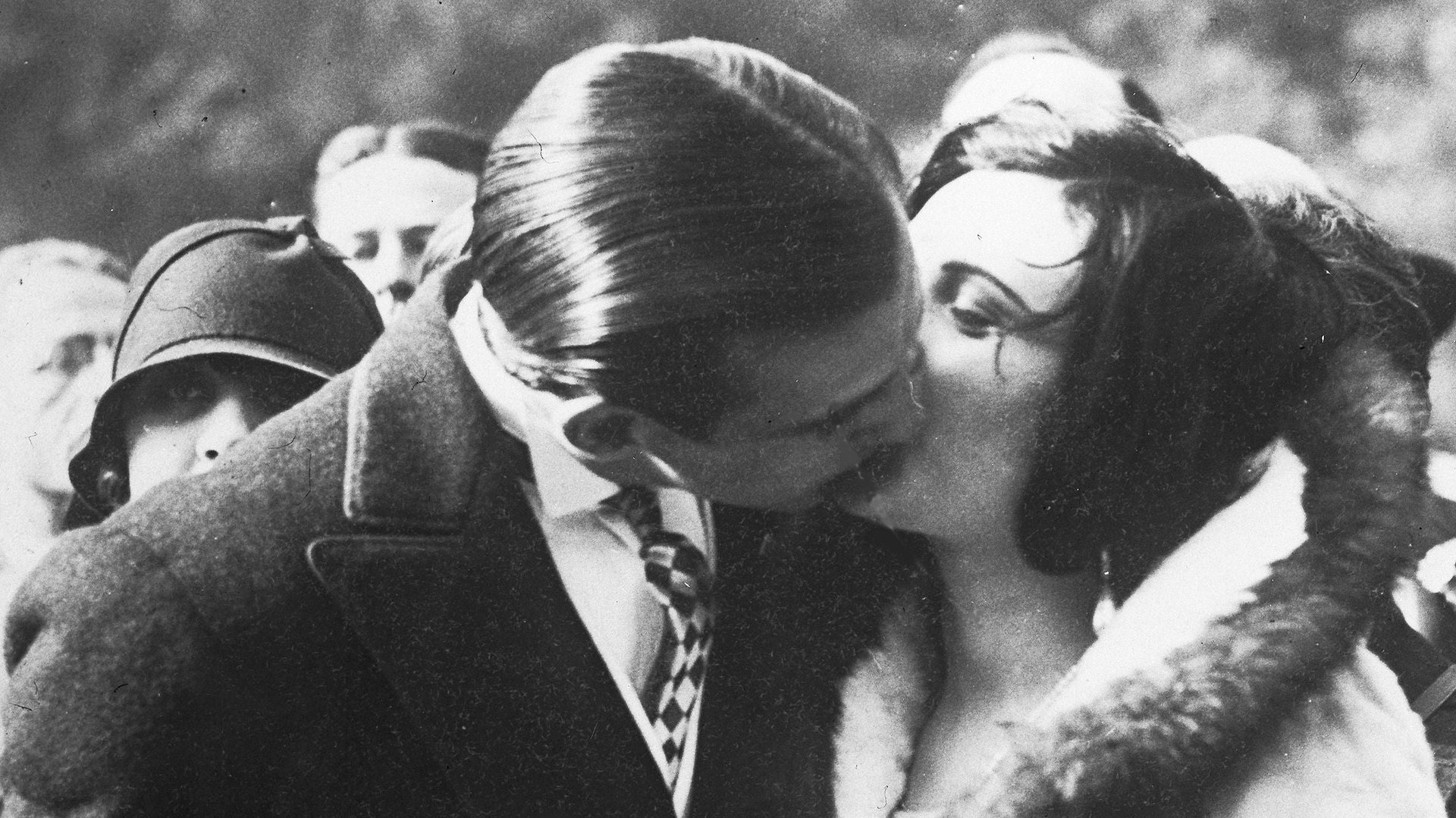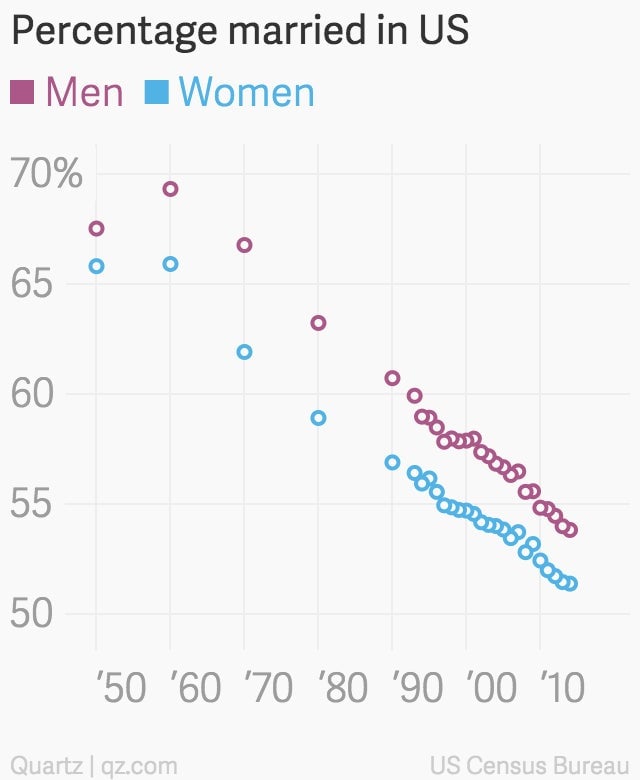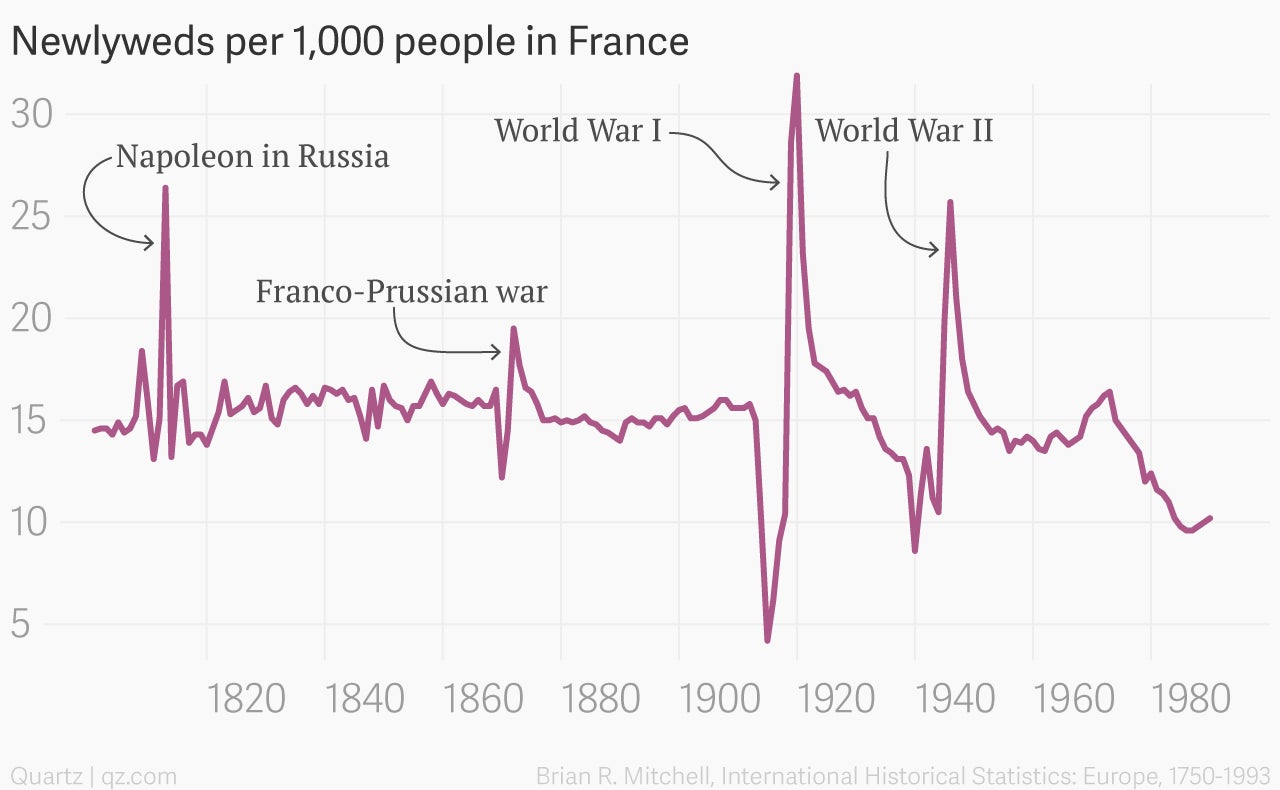Think a good man is hard to find now? Try France after World War I
A good man, it seems, is often hard to find.



A good man, it seems, is often hard to find.
But amid a widespread conversation about declining marriage rates in the US and much of the developed world, it’s worth pointing out that despite appearances, a male-female imbalance isn’t really what’s going on.
Pronounced gender imbalances are a fact of life in China and India, where traditional preferences for males together with developments in prenatal medical technology resulted in a surge of gender selection through abortion in the 1990s. Likewise, Lebanon’s marriage rates remain low, a demographic inheritance of a disastrous 15-year civil war and resulting waves of emigration of eligible males. A similar situation dogged Vietnam in the 1970s and 1980s, after the end of the war with the US. (Though now Vietnam is heavily tilted towards males, due to sex selection.)
In what’s known as the “marriage squeeze” hypothesis, demographers and economists once thought gender imbalances among those in their prime marrying years exerted a profound influence on marriage rates. It was a good theory. But like many good theories, it doesn’t always square with empirical data.
Take, for example, France after World War I. The war of 1914-1918 devastated France demographically. During the war years, there were roughly 8.7 million Frenchmen between the ages of 20 and 50. Some 8.5 million enlisted in the military. Roughly 1.4 million died. After the war there were about 40% fewer single French men for every unmarried woman, compared to before, according to a recent paper on the topic by John Knowles of Simon Fraser University and Guillaume Vandenbroucke, of the Federal Reserve Bank of St. Louis.
According to traditional “marriage squeeze” thinking, French marriage rates in the years after the Great War should have collapsed. Instead, they soared, as they have after other bloody conflicts.

French demographer Louis Henry first spotlighted this fact in the 1960s, arguing that French women found a very elegant solution to the postwar dilemma: They married younger men. Other research suggests French women were much more likely to marry below their class in the aftermath of the war, reflecting the scarcity of male partners. The more recent paper suggests the postwar marriage boom is merely the flip side of the sharp decline in marriages seen during the war. The authors theorize that after World War I those marriageable men who put off marrying during the war helped supercharge the institution after 1918.
“The point is that the type of men that are around, i.e. how marriageable they are, is critical to the marriage rate,” wrote Vandenbroucke, one of paper’s authors, in an email to Quartz. “You could have way fewer men around (as after the war) and still women can have a better chance to marry because the guys that are around are more marriageable.”
Of course, even though US gender ratios are slightly tilted in favor of men—roughly 96.7 men for every 100 women in 2010—the US is a far cry from France in 1920s.
But the saga of the French marriage after the war underscores that while marriage is a market, like all markets, it’s never simply a matter of supply and demand.